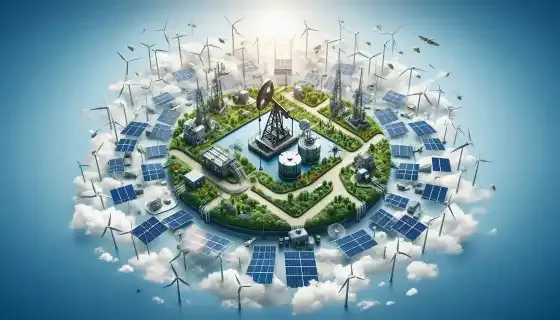The Future of Energy: Petroleum vs. Alternatives
Fueling the Future: Petroleum vs. Renewable Alternatives
 |
| The Future of Energy: Petroleum vs. Alternatives |
Introduction:
As our world marches towards a future that demands sustainability, the energy sector stands at a crossroad. The burning question on everyone’s mind is: Will continue to hold its ground as the dominant energy source, or will we see a surge in alternative energy solutions? This article will explore both sides of the debate, examining current state of petroleum, the promising future of alternative energy, and how technology, policy, and societal behavior will shape this dynamic landscape.
The Current State of Petroleum:
Petroleum remains a key player in the global energy landscape. As of 2022, it accounted for approximately 31% of total global energy consumption, according to the International Energy Agency (IEA) (source: IEA). While many countries have made commitments to reduce their carbon footprints, petroleum continues to power our vehicles, industries, and homes.
Economic Impact:
In many countries, particularly those rich in oil reserves, the petroleum industry significantly contributes to national economies. Here are some key points:
Job Creation: The oil sector employs millions globally, from drilling engineers to logistics specialists.
Export Revenue: Nations like Saudi Arabia and Russia depend heavily on oil exports, which finance social programs and infrastructure.
Investment: Oil markets attract significant foreign investment, influencing global economic patterns.
However, the economic reliance on petroleum can also lead to vulnerabilities, such as price fluctuations and dependence on finite resources.
The Rise of Alternative Energy:
As technology advances and environmental awareness grows, alternative energy sources are becoming more viable and popular. Wind, solar, hydro, and geothermal energy are making substantial inroads into the energy market.
Renewable Technologies Advancements:
Advancements in technology have significantly lowered the cost of renewable energy. For instance:
Solar Energy: The cost of solar panels has dropped by nearly 90% since 2000, making it one of the most accessible forms of energy today (source: Lazard).
Wind Energy: Onshore wind power is now cheaper than fossil fuels in many markets, with competitive offshore installations also emerging.
Environmental Benefits:
Alternative energies are often touted for their lower environmental impact. Here’s how they stand out:
Reduced Emissions: Renewable sources typically produce minimal greenhouse gases compared to fossil fuels.
Sustainability: Solar and wind rely on natural phenomena, meaning they can be replenished naturally and indefinitely.
Biodiversity: With proper management, renewables can coexist with natural habitats, unlike oil drilling, which can result in habitat destruction.
Global Trends:
Countries worldwide are transitioning towards greener energy as part of their commitments to international agreements like the Paris Climate Accord. This shift is paving the way for the following trends:
Energy Storage: Advancements in battery technology will help store renewable energy, addressing one of the significant drawbacks of sources like solar and wind.
Electric Vehicles (EVs): The shift toward electric mobility is a potent example of how alternatives challenge traditional energy, with EV sales surging in recent years.
Policy Incentives: Governments are implementing tax credits, subsidies, and tariffs to encourage the development of renewable energies.
The Balance Between Petroleum and Alternatives:
While it’s easy to see renewable energy as the knight in shining armor, the truth isn’t so black-and-white. Petroleum and alternative energy sources will likely coexist for some time, influenced by several factors.
Bridging the Gap:
The transition towards alternative energy will not happen overnight. Here are some of the reasons:
Infrastructure: Much of the existing energy infrastructure is still geared towards fossil fuels. Upgrading to accommodate renewables is costly and time-consuming.
Consumer Behavior: Changing the public’s reliance on petroleum-powered vehicles and heating will require time and education.
Hybrid Solutions:
Interestingly, hybrid systems are emerging as a practical compromise. Innovations such as biofuels and hydrogen fuel cells combine fossil fuel dependency with renewable technology. This approach aims to:
Lower Carbon Footprint: Utilize existing petroleum infrastructures while reducing emissions.


Comments